Want to turn a green lane into a brown lane, tow a Gulaschkanone across a snowy field, or roam the Western Desert trashing Axis airfields? Get a 4×4. Want quick introductions to games of interest to wargamers and simmers? Read a 3×3. Prior to penning one of these articles I’ll play three tempting titles for three hours each. While it would be cavalier to call the reports that result from such brief auditions ‘reviews’, it’s conceivable they might lead to more prolonged playtests, and prompt or prevent the odd purchase.
By Stealth and Sea
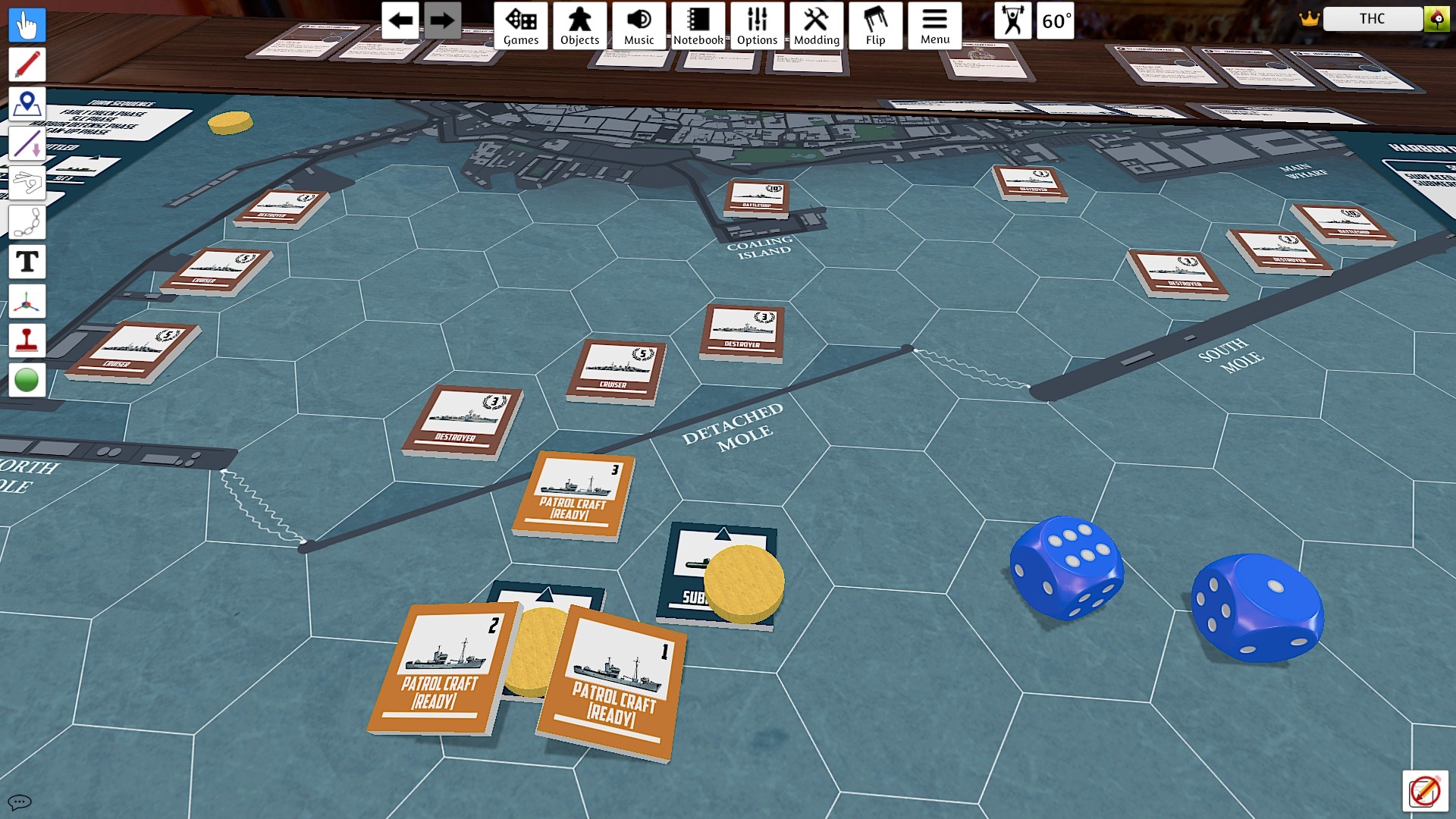
Having proved it was possible to sneak into harbours and destroy warships using mini-subs during WW1, it was hardly surprising the Italians employed similar tactics and technology in WW2. The lion’s share of the 200,000 tons of Allied shipping sent to the bottom by the Decima Flottiglia MAS between 1940 and 1943, was dispatched with the aid of ‘SLCs’ (Siluri a Lenta Corsa – “Slow-running torpedoes”) – the two-man submersibles that star in By Stealth and Sea, a solo wargame co-created by a master of the solitaire form.
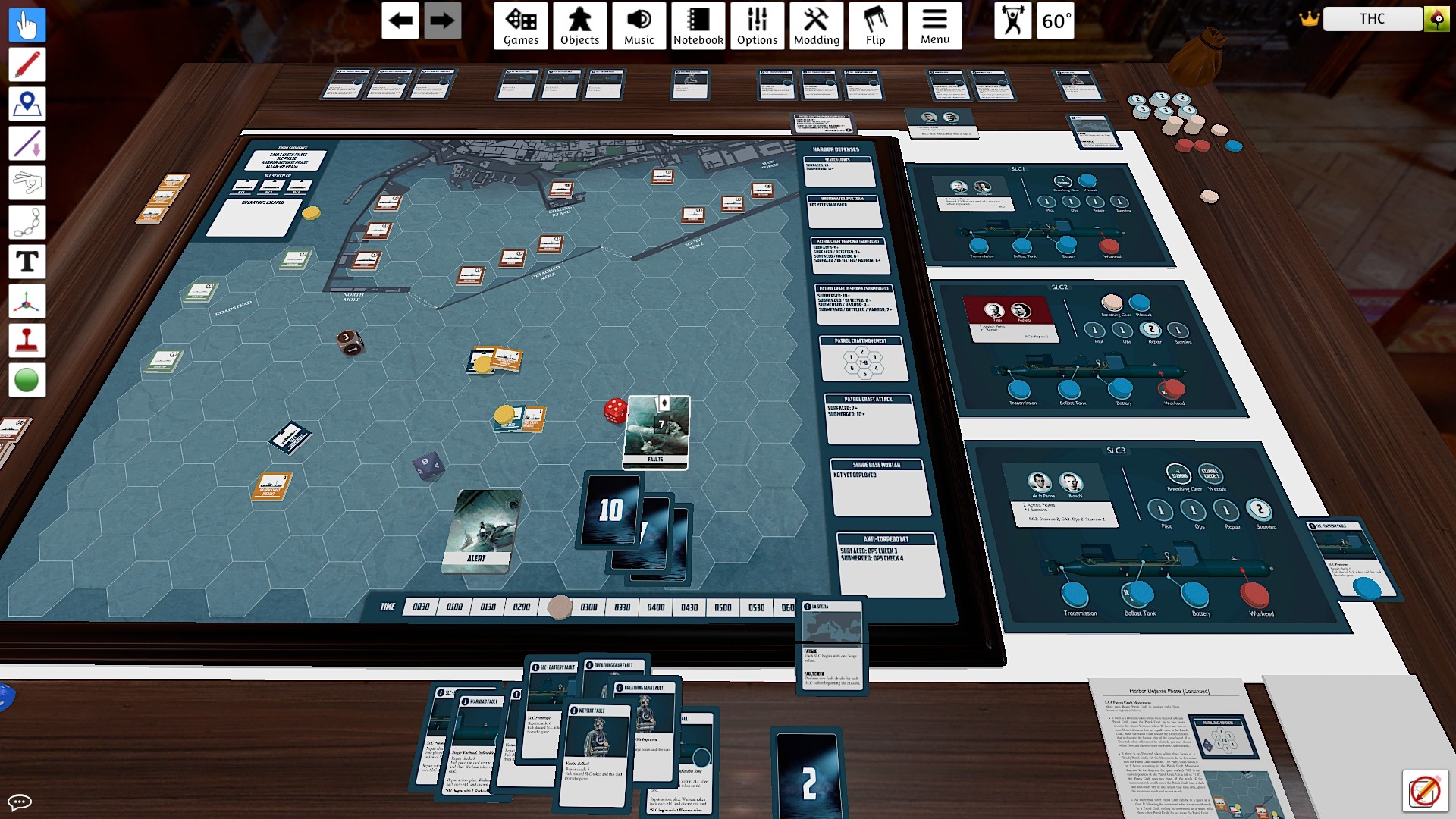
Unlike Pavlov’s House and Castle Itter, By Stealth and Sea has yet to inspire a standalone PC port. However, thanks to Tabletop Simulator, grogs short of space and/or cash can enjoy its tense, calamity-sprinkled ops. This free TS module contains eveything found in the boxed version published by Dan Verssen Games. With it you can recreate nine different historical sorties, and run multi-mission campaigns in which technology, threats, and crew skills metamorphose over time.
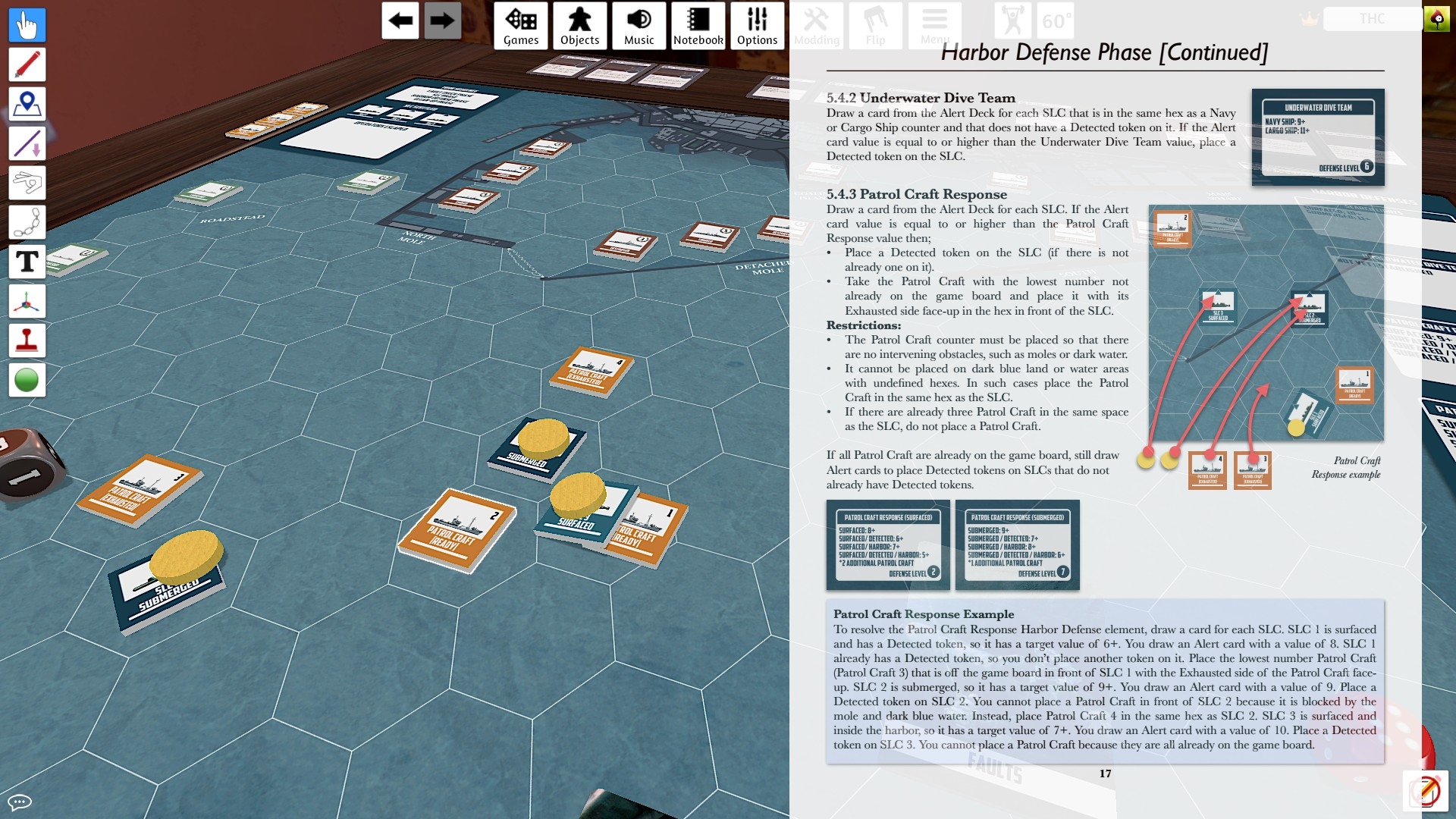
While it would be a tad bold to embark on a campaign after just three hours with BS&S, by the end of your first 180 minutes you’ll almost certainly know David Thompson and Nicola Saggini’s easy-to-digest rulebook inside-out, have sunk the odd British ship, and lost a few SLCs. I spent the first third of the audition period watching introductory vids like this one and perusing the excellent manual. During hours 2 and 3 I put the knowledge I’d acquired into practise in the searchlight-caressed, patrol craft-churned waters of Gibraltar harbour.
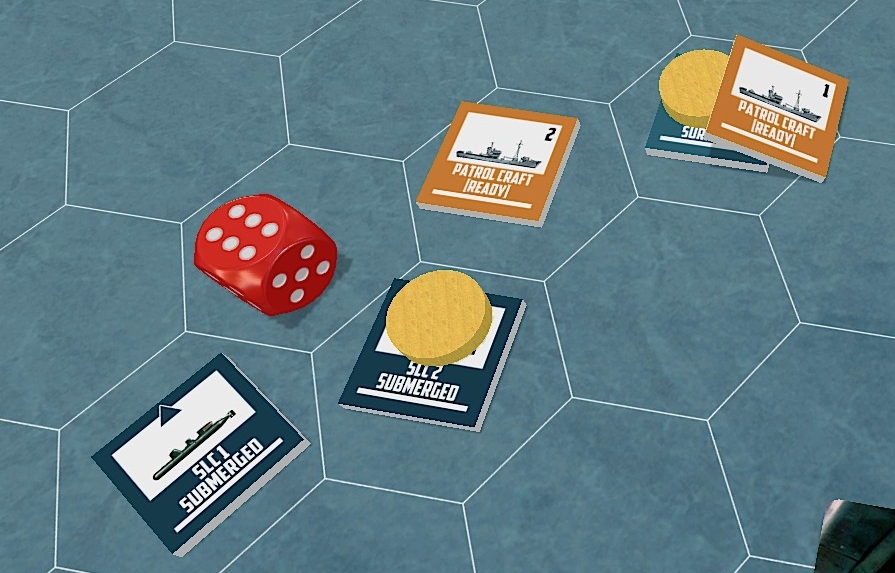
Thanks to lively enemy ‘AI’, a clever action point system, and influential random faults, Mission 1 (30 October, 1940, Gibraltar) seems incapable of generating boredom or predictability. Presumably, as the other eight scenarios utilise the same mechanisms, they are equally ripe for replay.
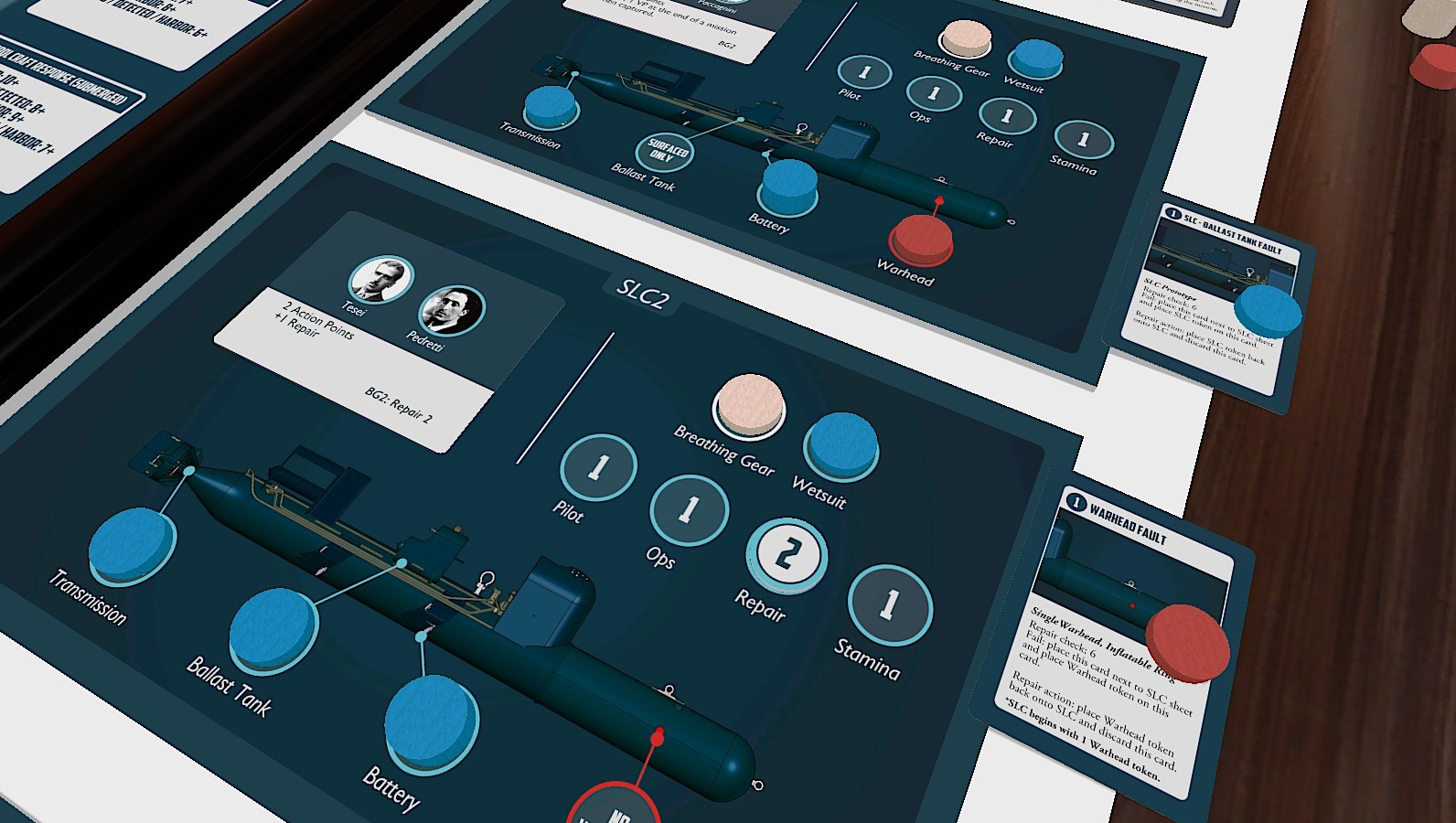
Complicating ingresses (egresses/escapes are abstracted) are a variety of technological gremlins that can leave your subs unable to move, submerge, and detach warheads at crucial movements. Often APs that ideally would be spent advancing or reorientating an SLC, end up being used to rectify faults or deal with the aftermath of patrol craft attacks. As the clock ticks down (all scenarios run for twelve half-hour turns) the temptation to gamble APs on risky high-reward manoeuvres increases. Yes, I could be sure of fixing SLC1’s transmission problem this turn by using both its APs, but as a skill check roll could achieve the same results at half the cost, leaving me 1AP for a dive attempt, perhaps I should chance my arm.
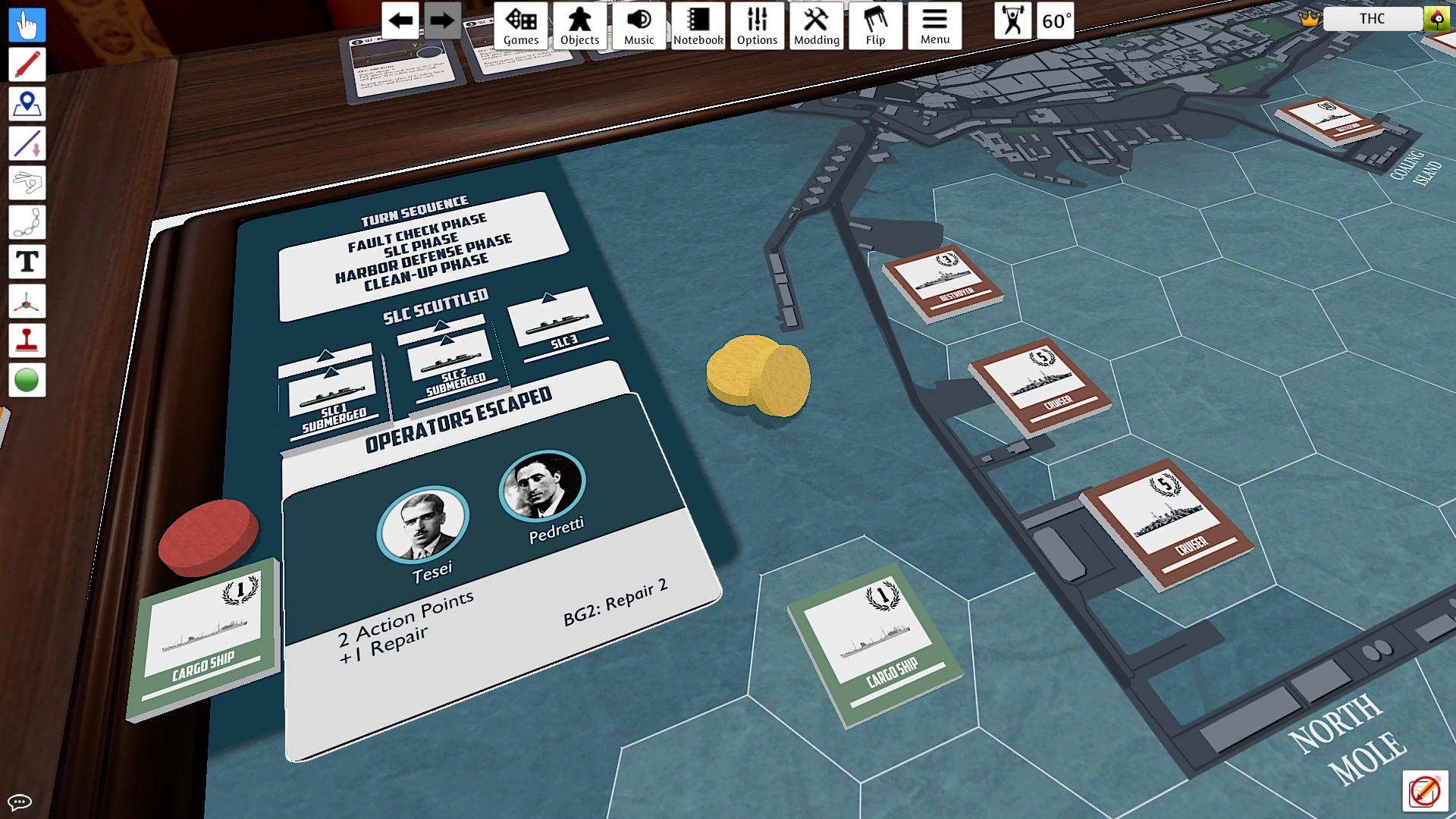
Which harbour entrance should I use? Should I bother fixing SLC3’s ballast tank fault or just plough on with fingers crossed? Have I time to reach that 10VP battleship or should I make for those nearby low-value freighters? Scuttling SLC2 now could net me two VP s – perhaps I should (literally) take the plunge while I still can? The decision-making in this fast-playing, confusion-free curio is – judging by my tasting session – never dull.
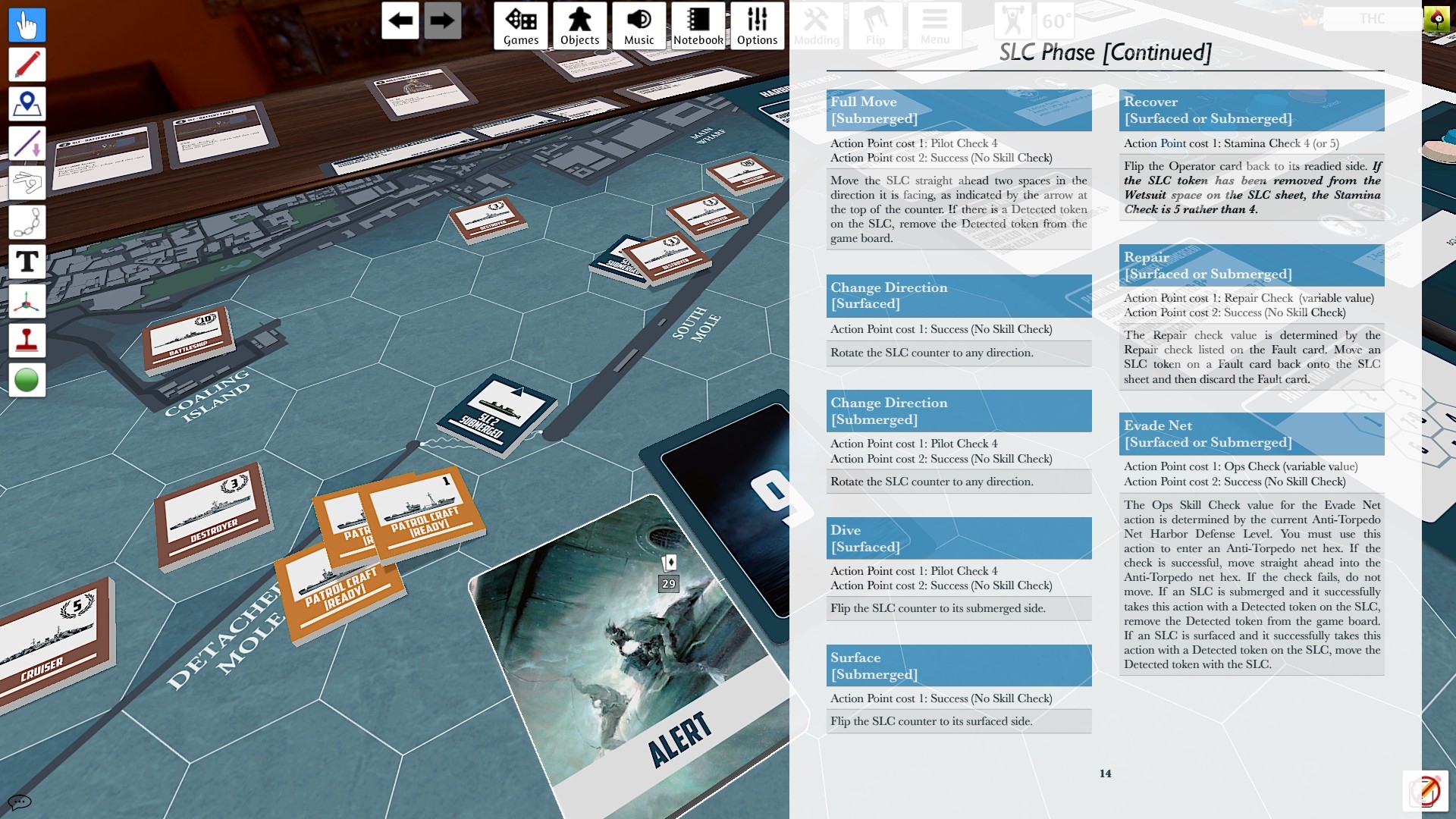
The chances of me abandoning By Stealth and Sea before I’ve had a go at wreaking havoc in Alexandria and Algiers, or tried a spot of campaigning, are very slim indeed.
* * *
SubROV : Underwater Discoveries
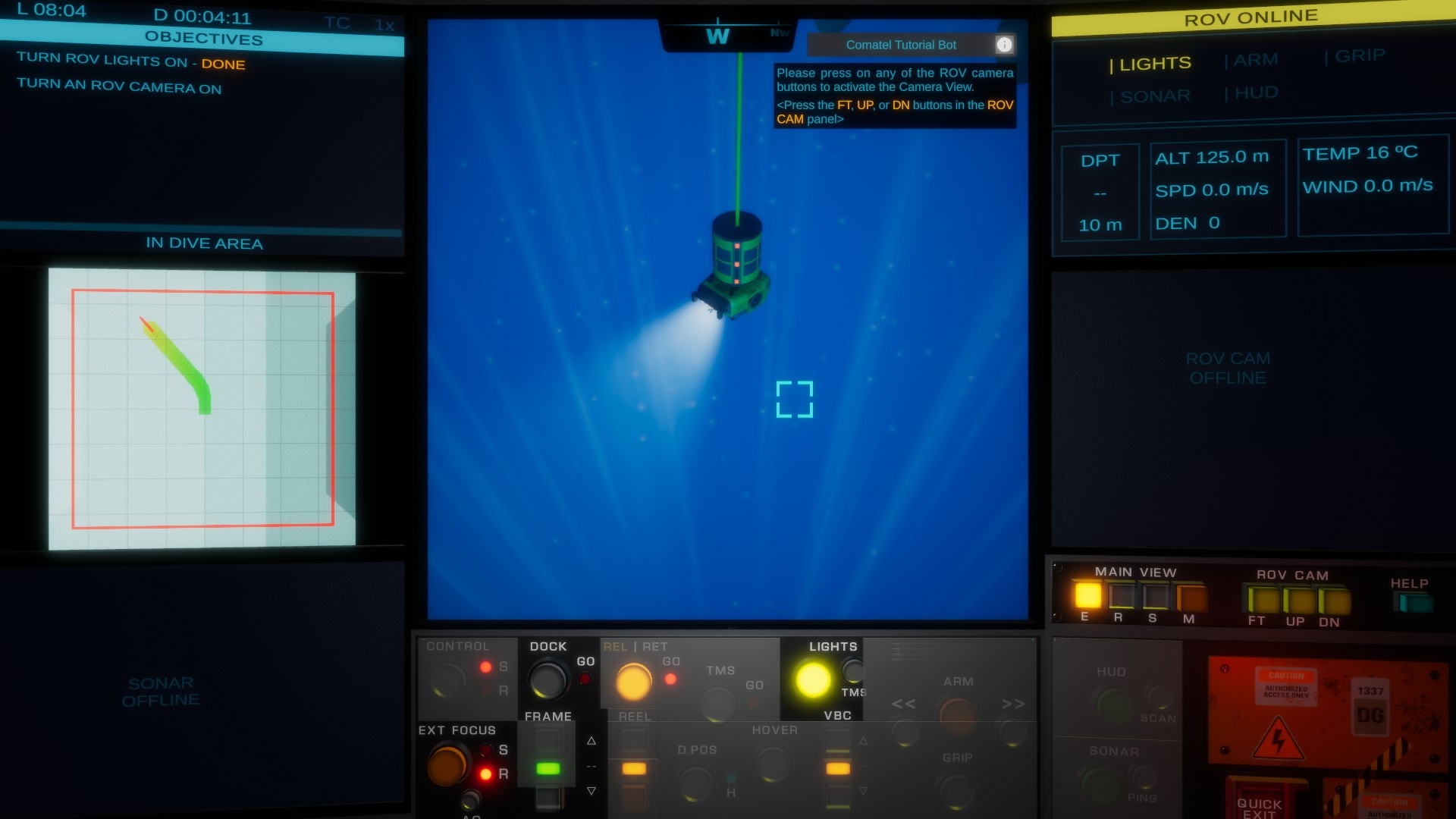
Jose Luiz Gonzalez Castro’s name can be found in the credits for titles such as Elite: Dangerous, Zoo Tycoon, and Bionic Commando, but until this solo undertaking the accomplished Spanish sound designer had never worn all the hats on a game project.
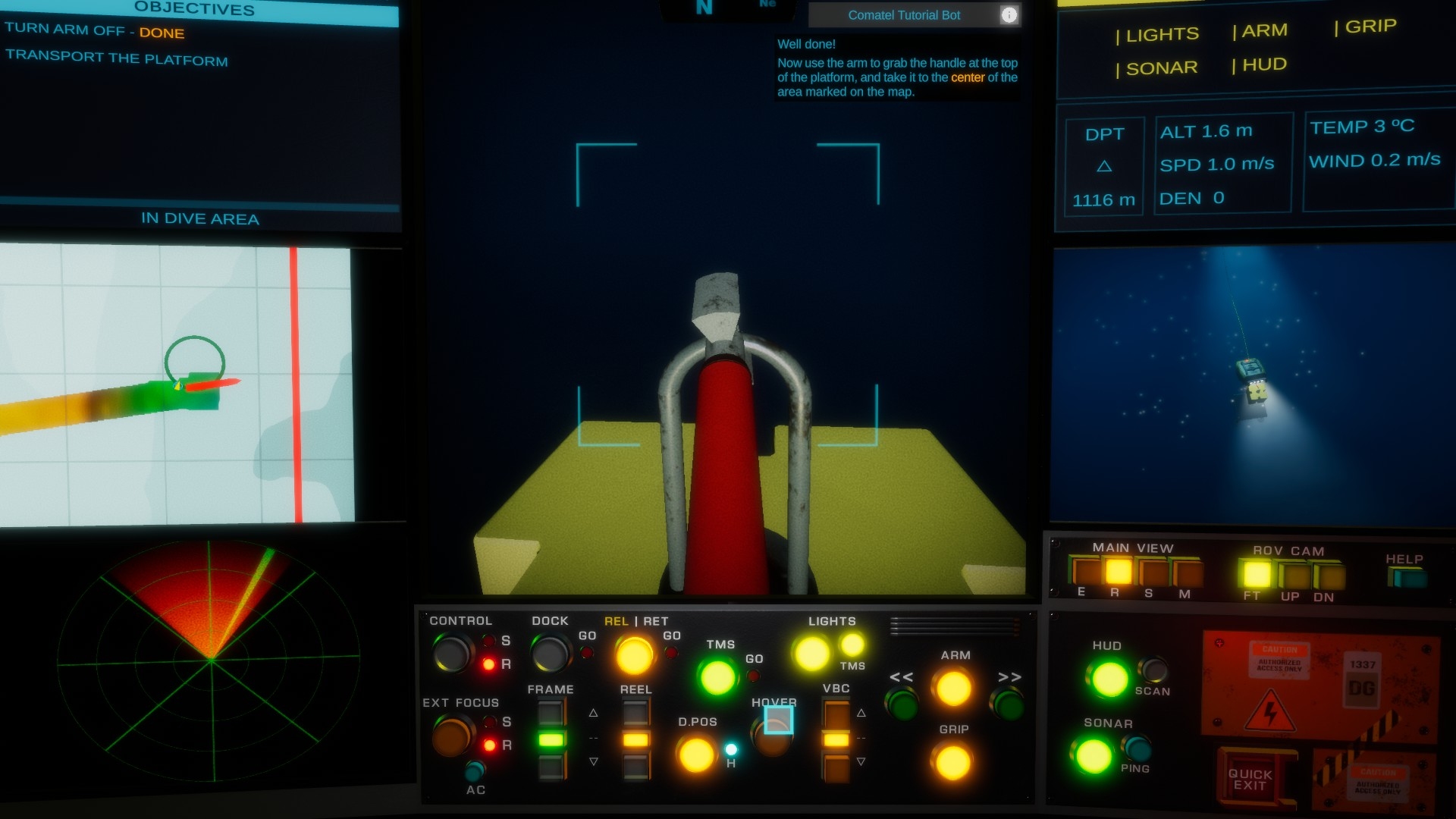
Partially funded by the National Science Foundation, and developed with help from the Bermuda Institute of Ocean Sciences and the Schmidt Ocean Institute, Early Access subROV is unlike almost anything else in my Steam library. An engrossing ROV operator sim with ‘flight’ and systems modelling sufficiently faithful/demanding to appeal to fans of Liftoff, Reentry, and Flight Simulator, it gets the ball rolling with a series of tutorials that do a fine job of demystifying the multitude of buttons, lights, and labels on the ever-present dashboard.
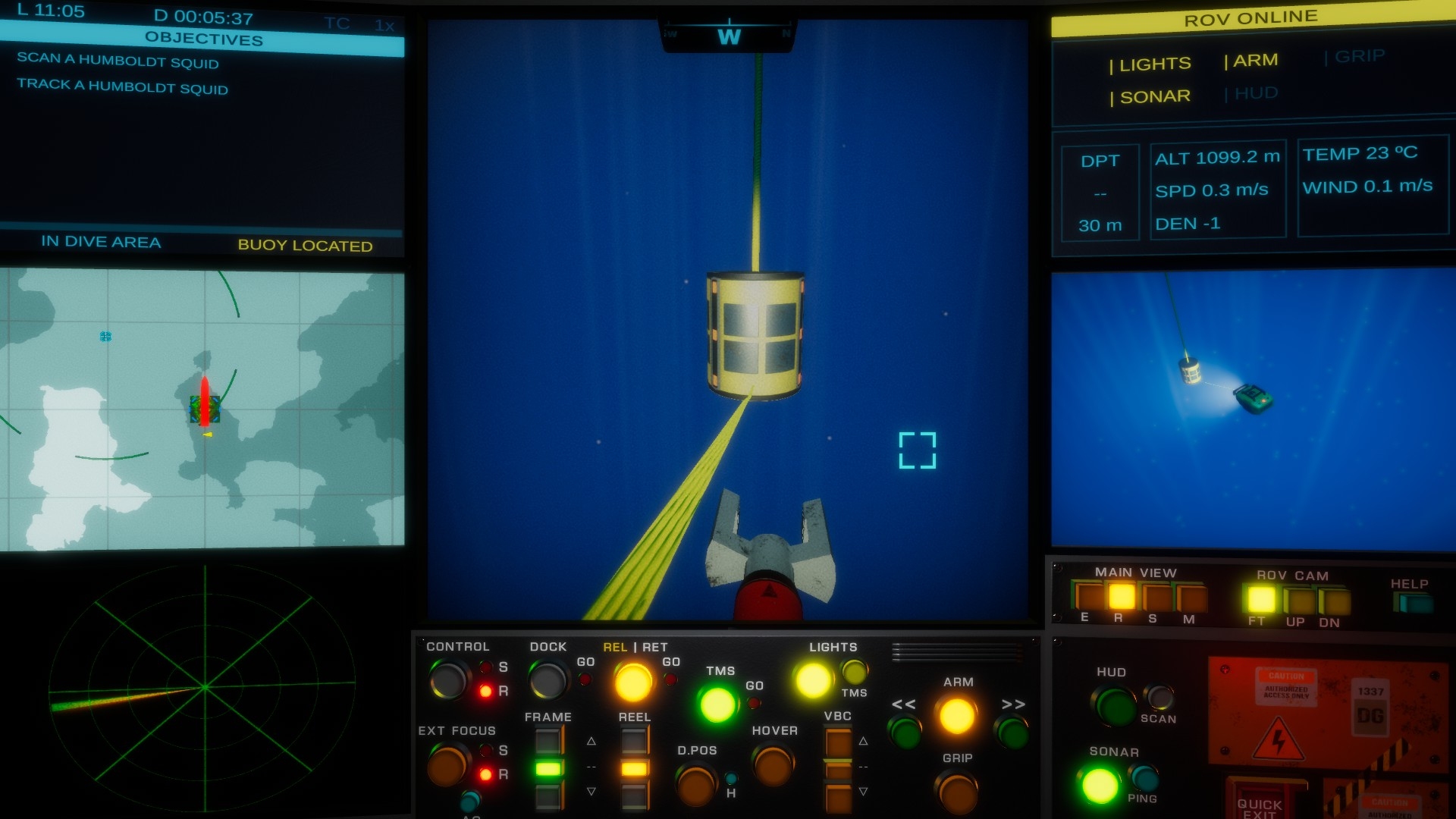
Thanks to SubROV I now know many modern ROVs aren’t attached to their motherships by a simple power-and-signal-conveying cable. A box of tricks called a Tether Management System (TMS) with its own spool of cable sits between the load-bearing armoured umbilical and the unmanned rover. Three hours ago I had no idea that modern ROVs had ballast tanks not dissimilar to the ones found on traditional submarines.
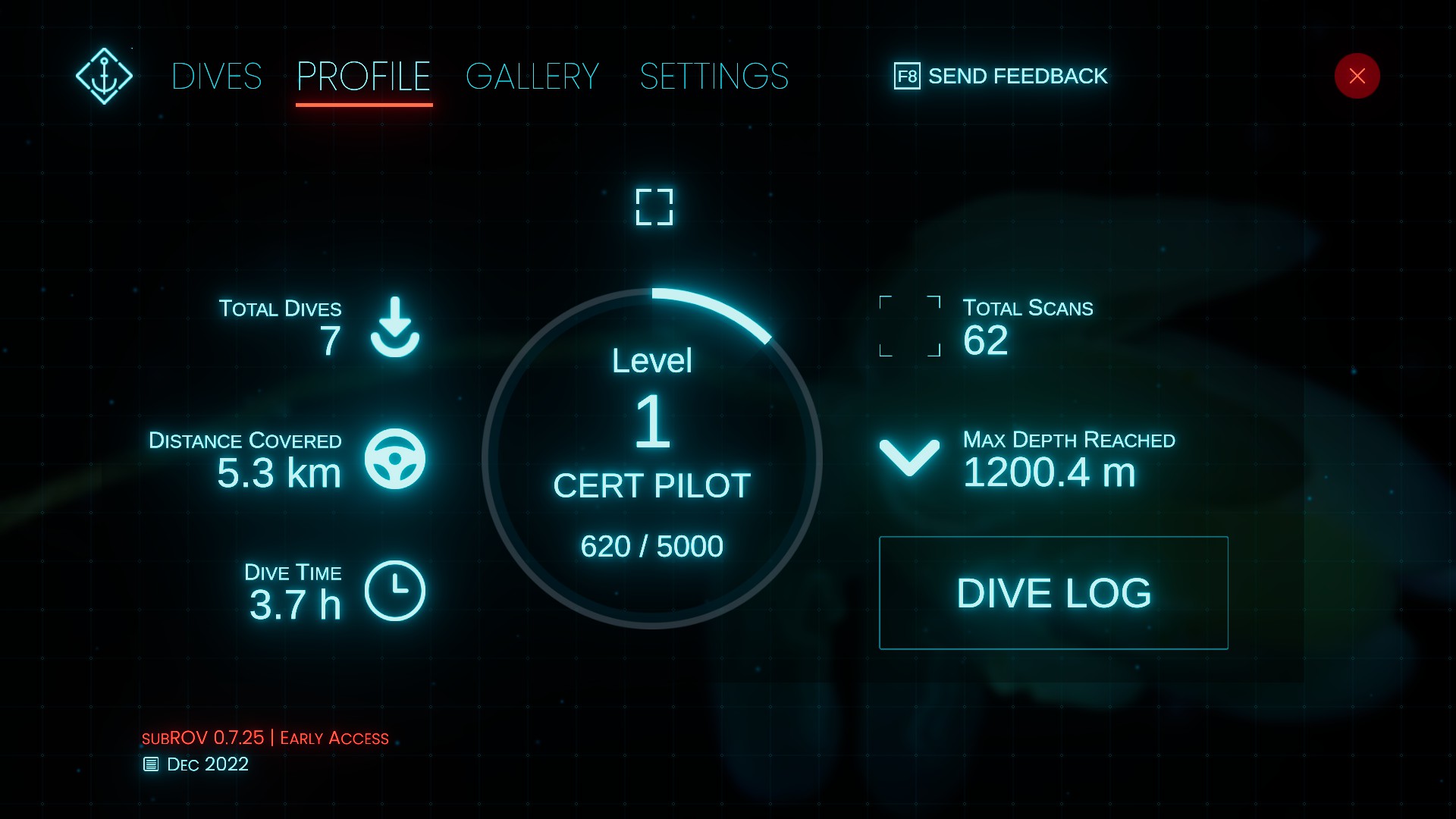
After around an hour of hands-on instruction, the game was sufficiently happy with my competence to declare me a qualified ROV pilot.
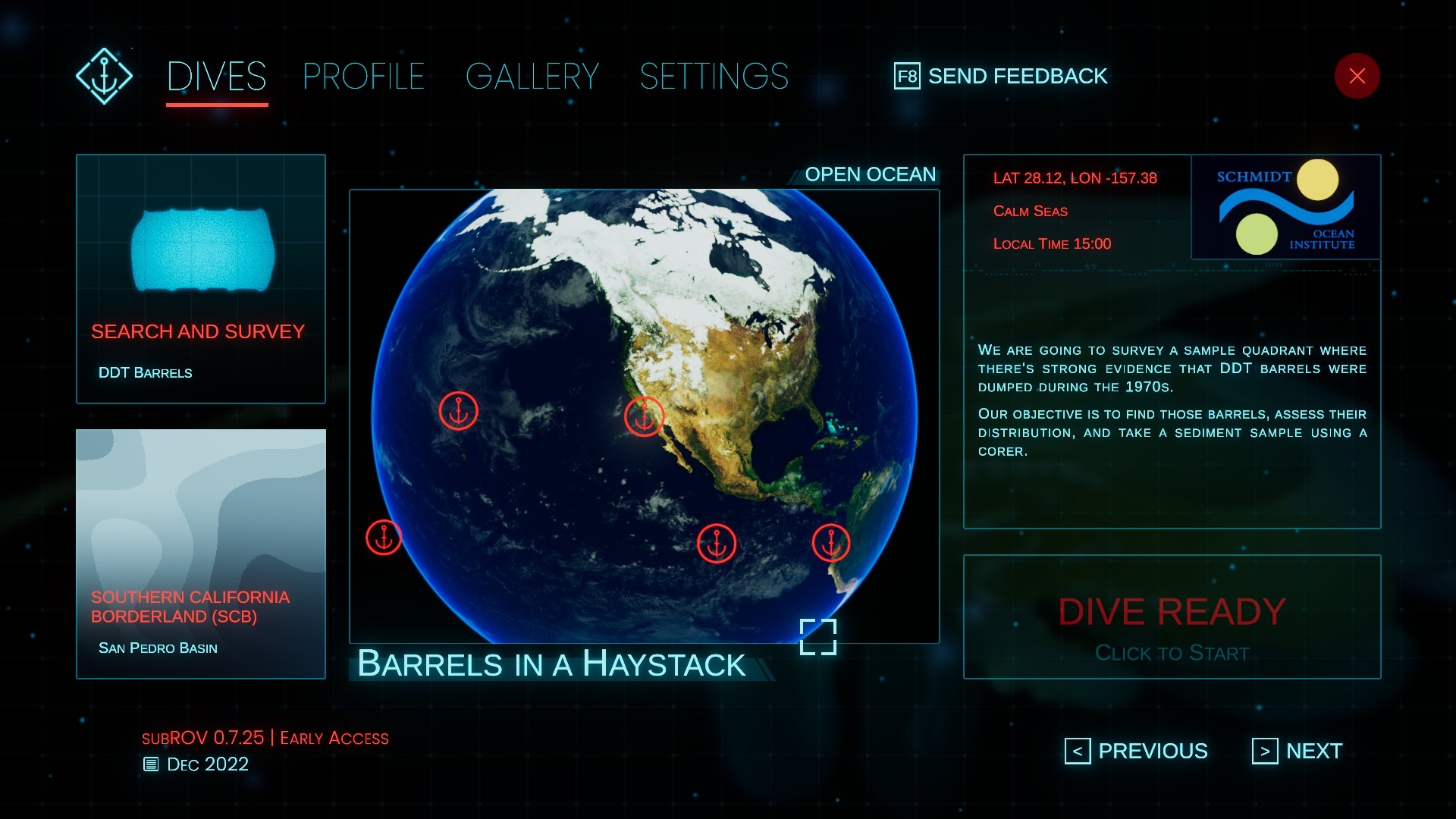
I was then left to tackle, in any order I saw fit, version 0.7.25’s five missions.
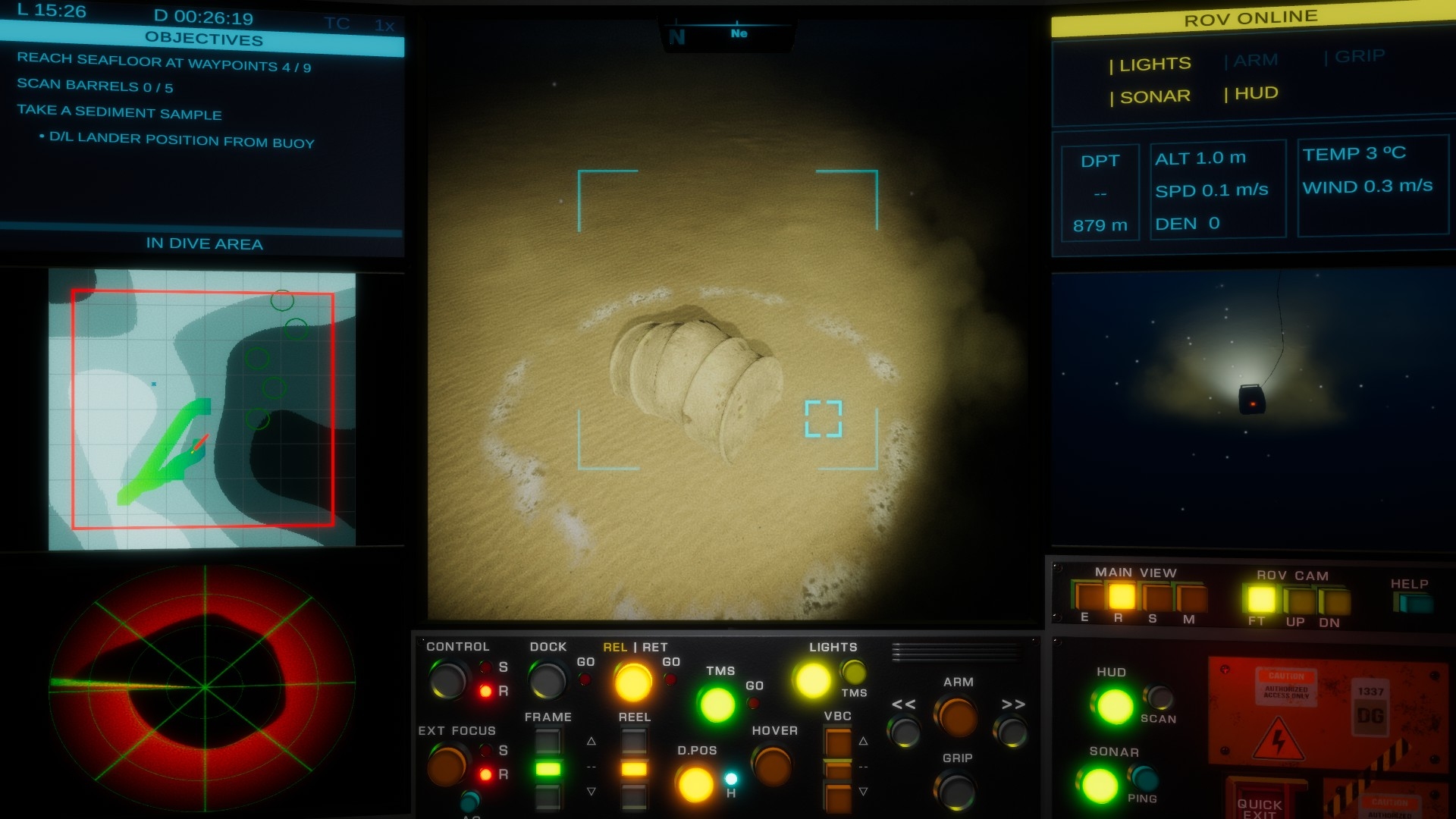
Five outings doesn’t sound a lot. However, going by my taste of ‘Barrels in a Haystack’ – a dive off the coast of Southern California in which you’re tasked with locating dumped DDT containers – there’s plenty of fathomage in each dive. The two rapt hours I spent scouring the current-buffeted depths for mouldering barrels of poison passed surprisingly quickly. Before abandoning the hunt to type these words, I’d found just 60% of the drums.
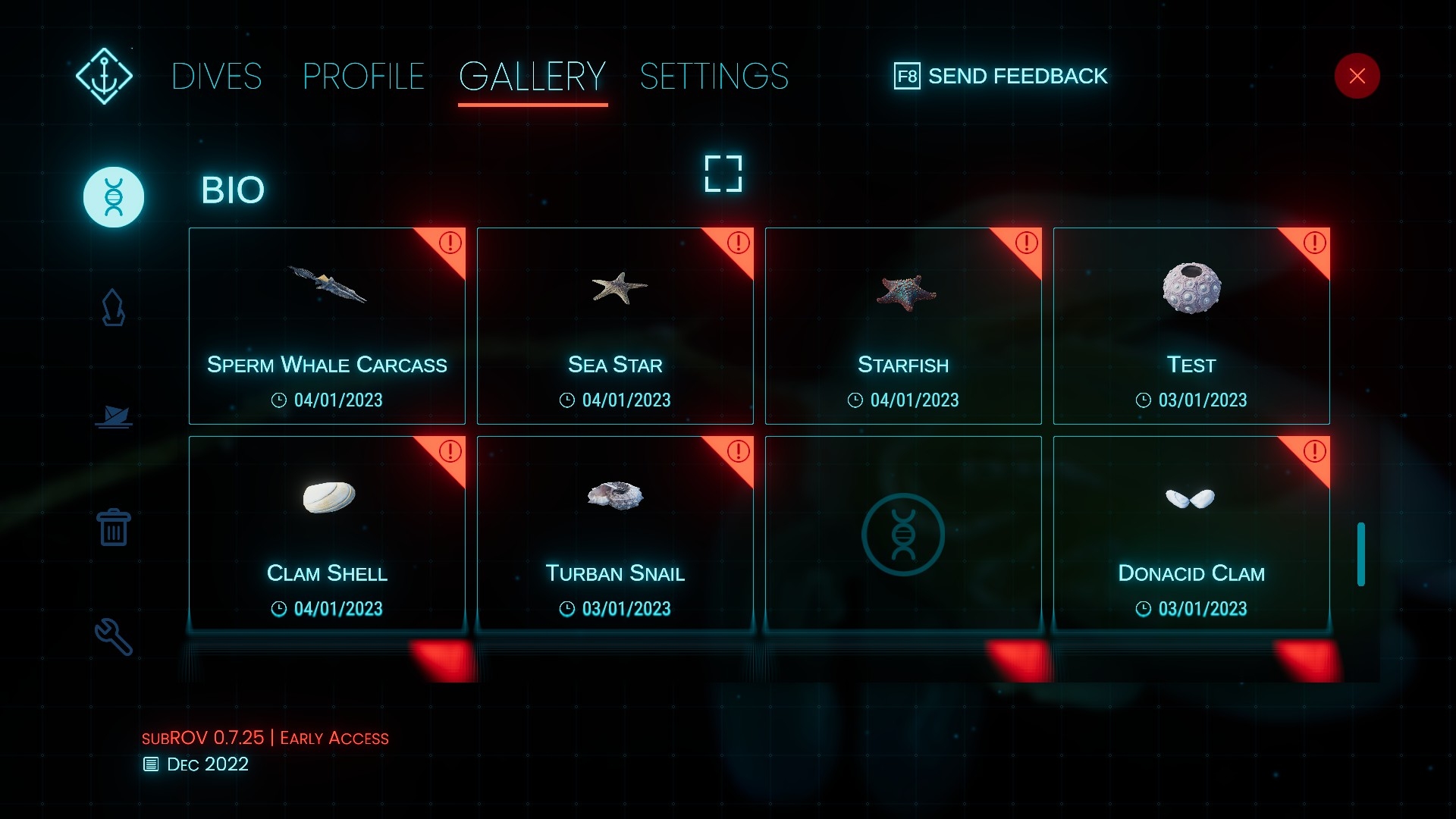
And there’s more to the dives than achieving primary objectives. Somewhere in the five Pacific Ocean mission areas, patiently awaiting exploration, are four unique shipwrecks. Scattered about are specimens of around 60 different plants and animals too. ‘Scan’ the latter at close range with the appropriate key and they appear in the ‘gallery’ – a permanent record of your underwater finds.
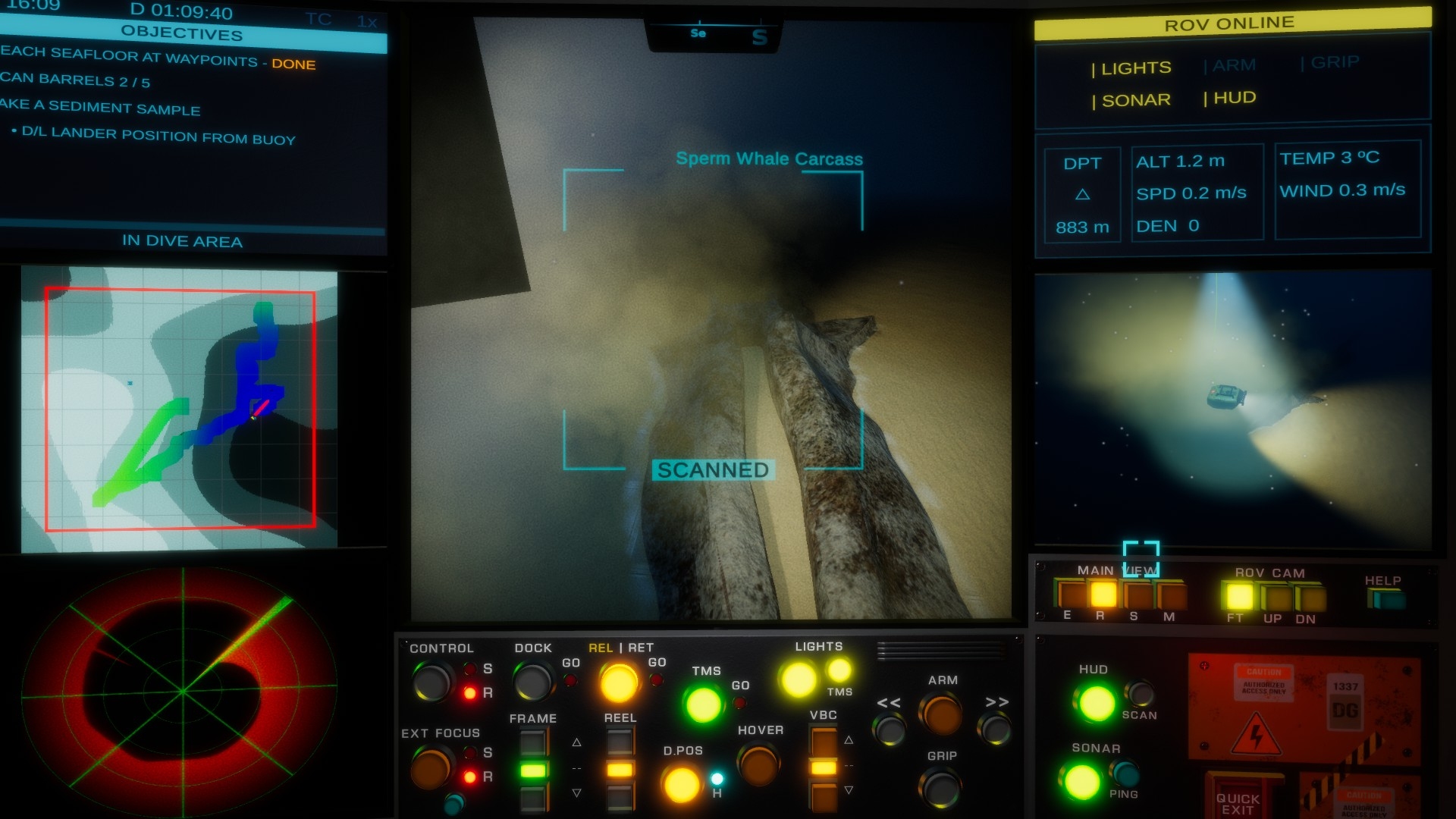
Stumbling upon a sperm whale skeleton has to be the highlight of my deep-sea delving thus far, although a brush with a live basking shark was almost as memorable.
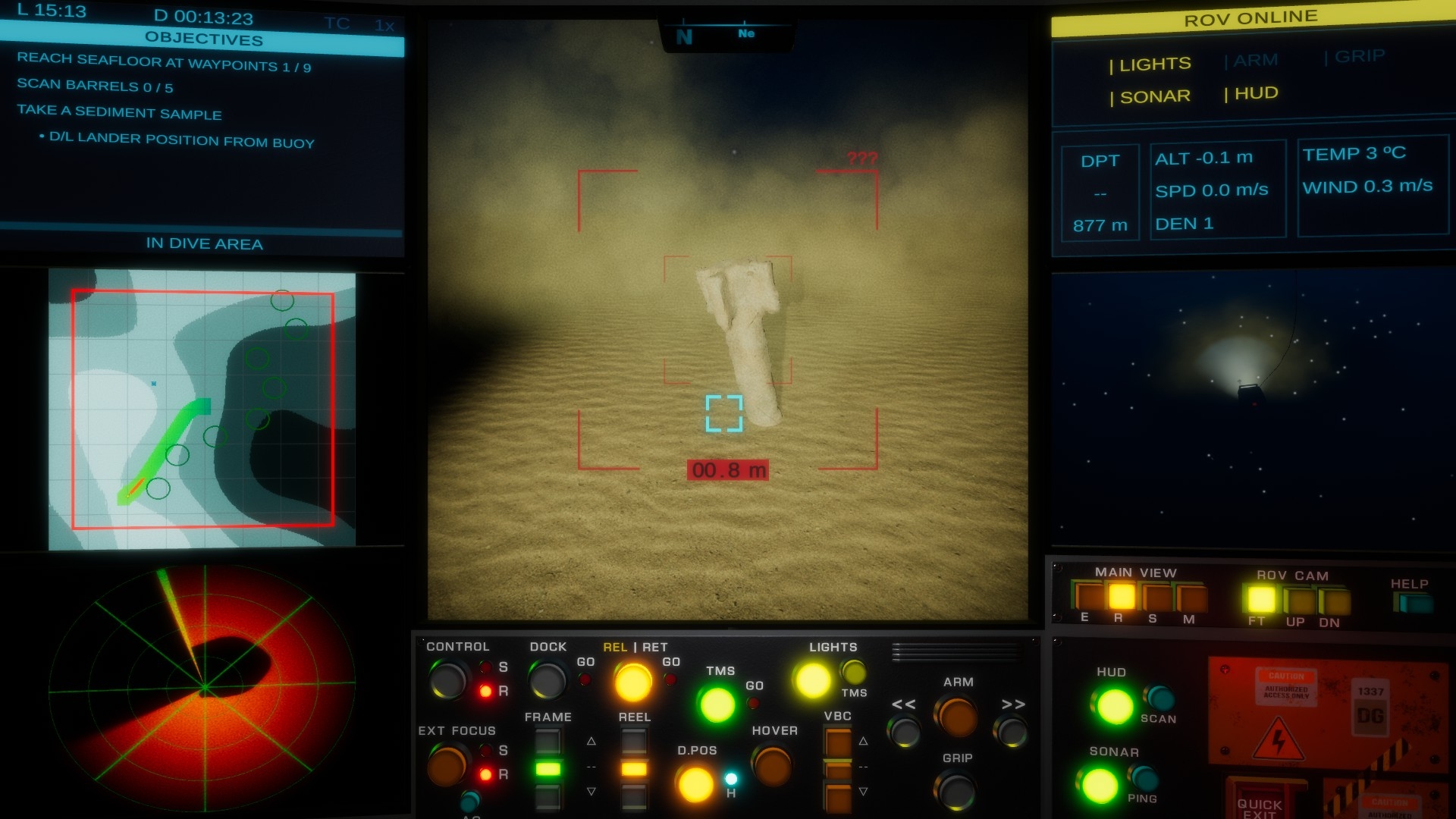
Hopefully Jose plans to implement damage modelling at some point. Collisions with seabed obstructions and the TMS arguably shouldn’t be entirely consequence free. A more realistic sonar would also increase appeal amongst serious simmers. Right now, a solitary starfish or whelk produces exactly the same sized response as a mortar bomb or hunk of scientific apparatus.
SubROV has enough going on in the physics department to keep my digits and mind busy, and sufficient good looks and atmosphere to keep reality at bay. What I’ve seen so far, I like.
* * *
Xenoform
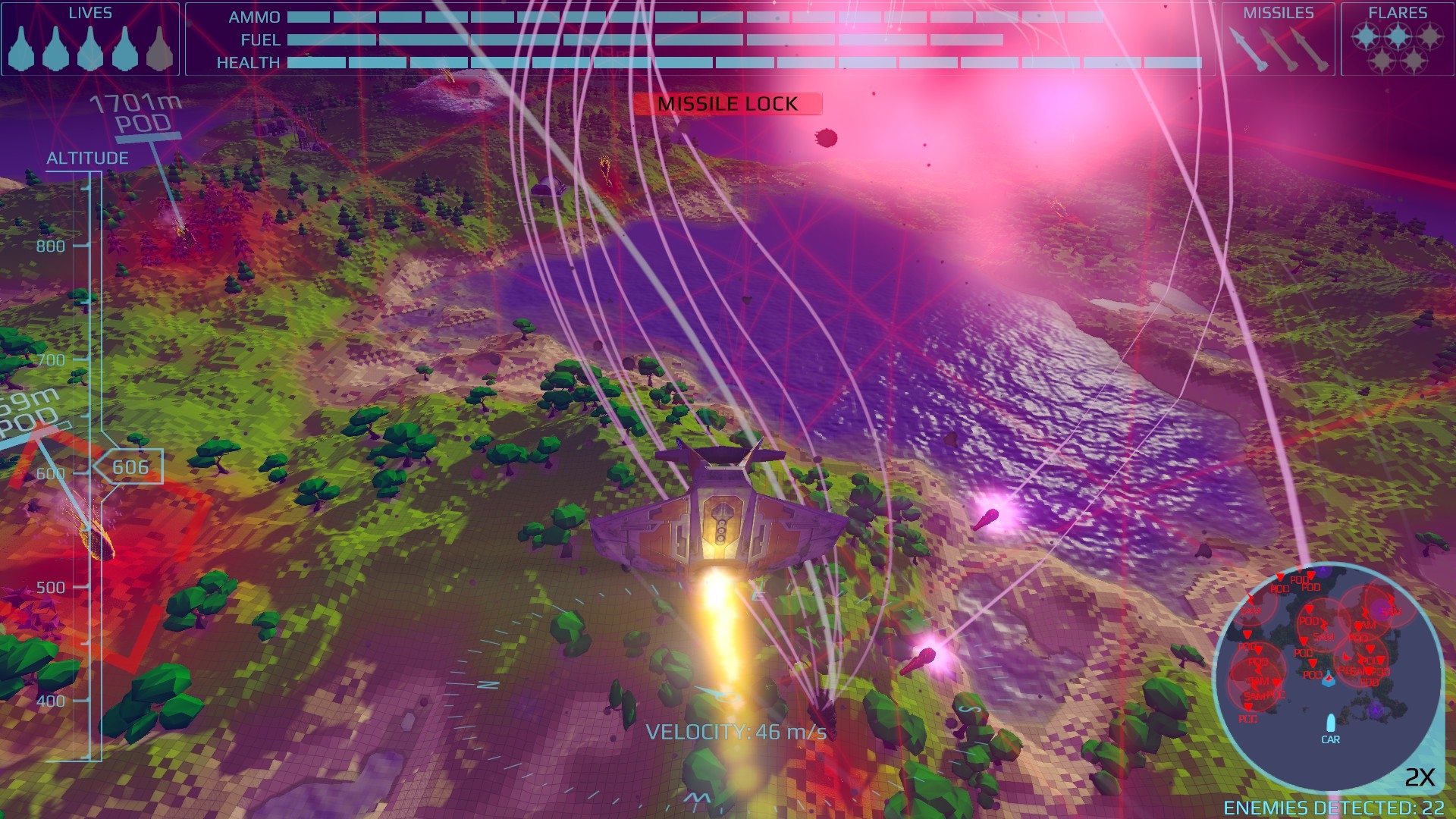
I think I’ve just found Steam’s most unfair user review…
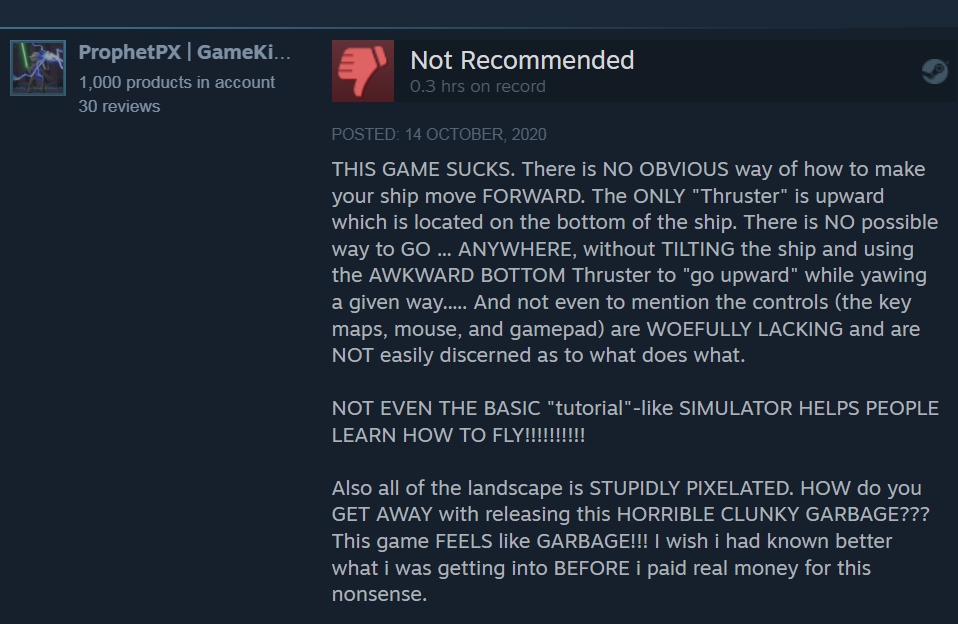
ProphetPX might have 1000 products in their account, but clearly their knowledge of video game history has some gaping holes and their taste in flight physics is achingly conservative.
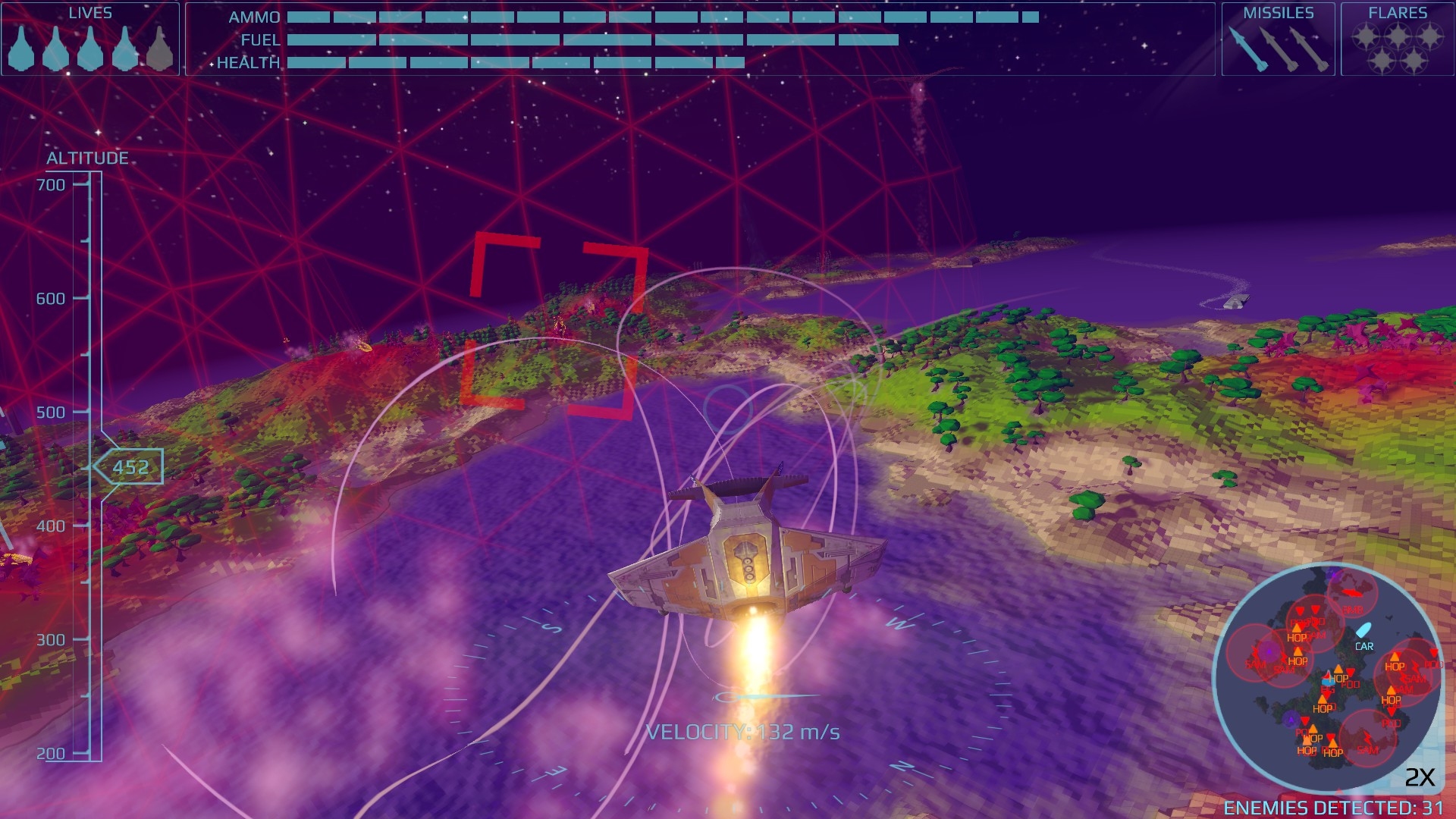
Made by Scott Goffman, the ex-Blizzard bloke behind the seriously entertaining Crash Dive 2, Xenoform is actually borderline brilliant. I can’t remember enjoying a Zarch/Virus homage more. The fact that your ship relies on one ventral thruster for both lift and propulsion is stolen cribbed genius. It gives the game’s strafing runs, dogfights, and touchdowns character and edge. It means you can’t rely on muscle memory formed by long exposure to conventional combat flight sims.
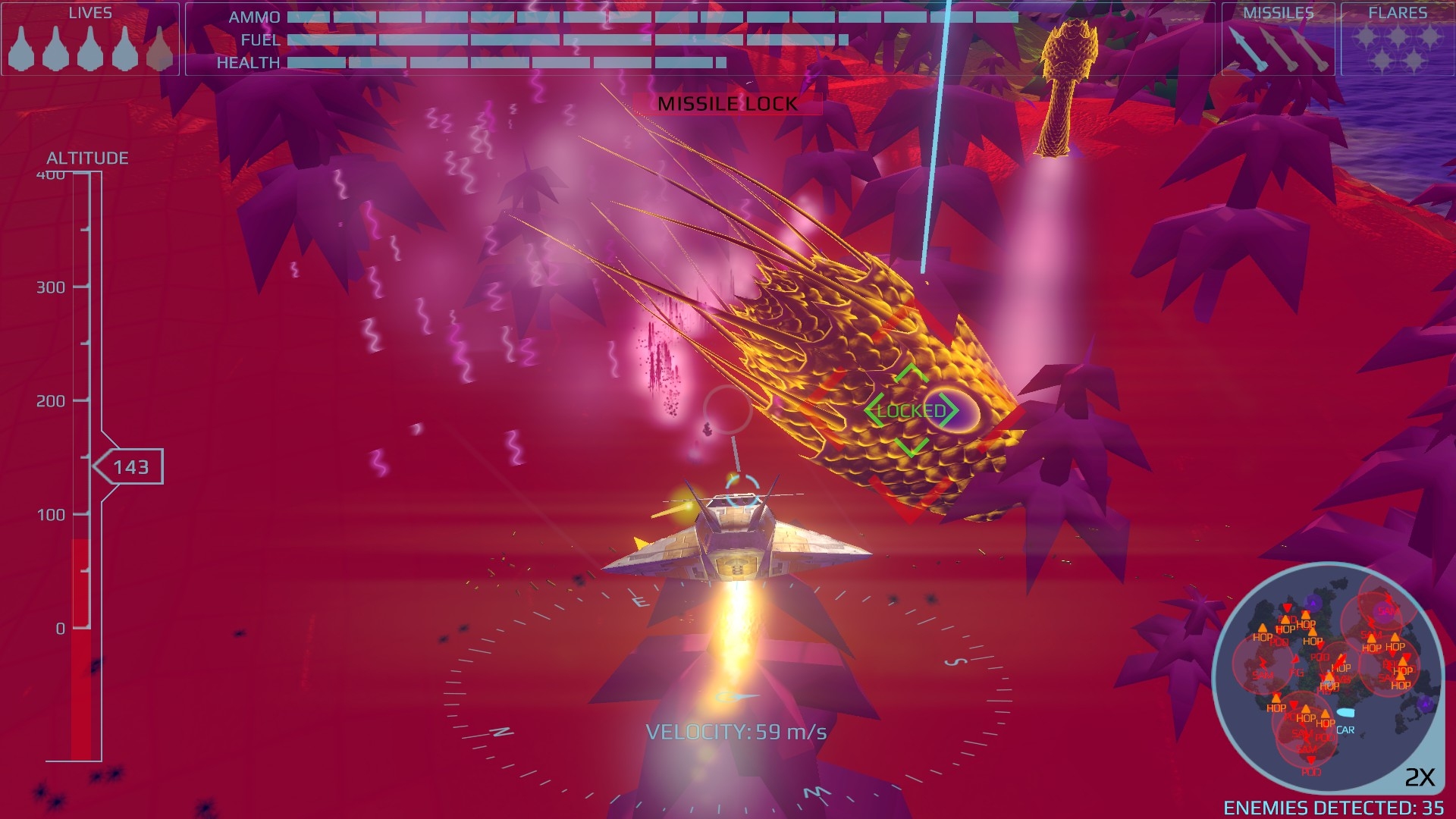
Like its inspiration, Xenoform tasks the player with battling a blight spread by alien invaders. As you jet skyward from the deck of the support vessel at the start of a mission, extraterrestrial ‘pods’ arrow earthward. Some of these turn into organic SAM sites on hitting the ground, others act as incubators for ‘hoppers’ – leaping infection carriers that bounce around the landscape like inebriated fleas spreading the scarlet canker as they go.
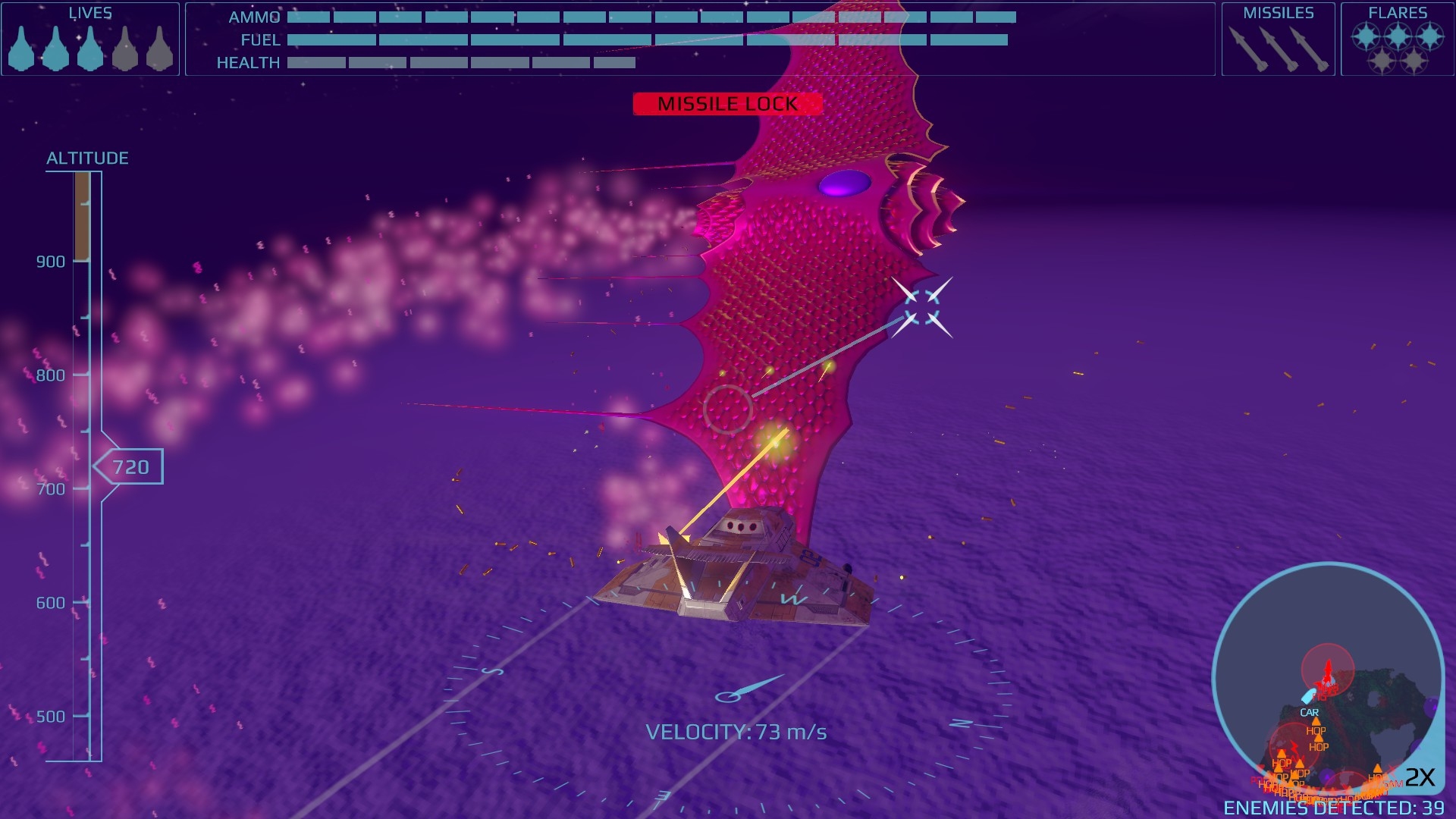
Early on in the 20-mission campaign, the aliens lack air cover. For a few outings, you get to ground-pound, refuel, and re-arm unmolested by swirling knots of enemy fighters and blight-broadcasting bombers. By Mission #12 – my current progress point – the gloves are well and truly off. While there’s still time to savour kills, analyse scanners, and choose tactics, more often than not the airspace around your dancing death dispenser is alive with incoming missiles and nimble bandits.
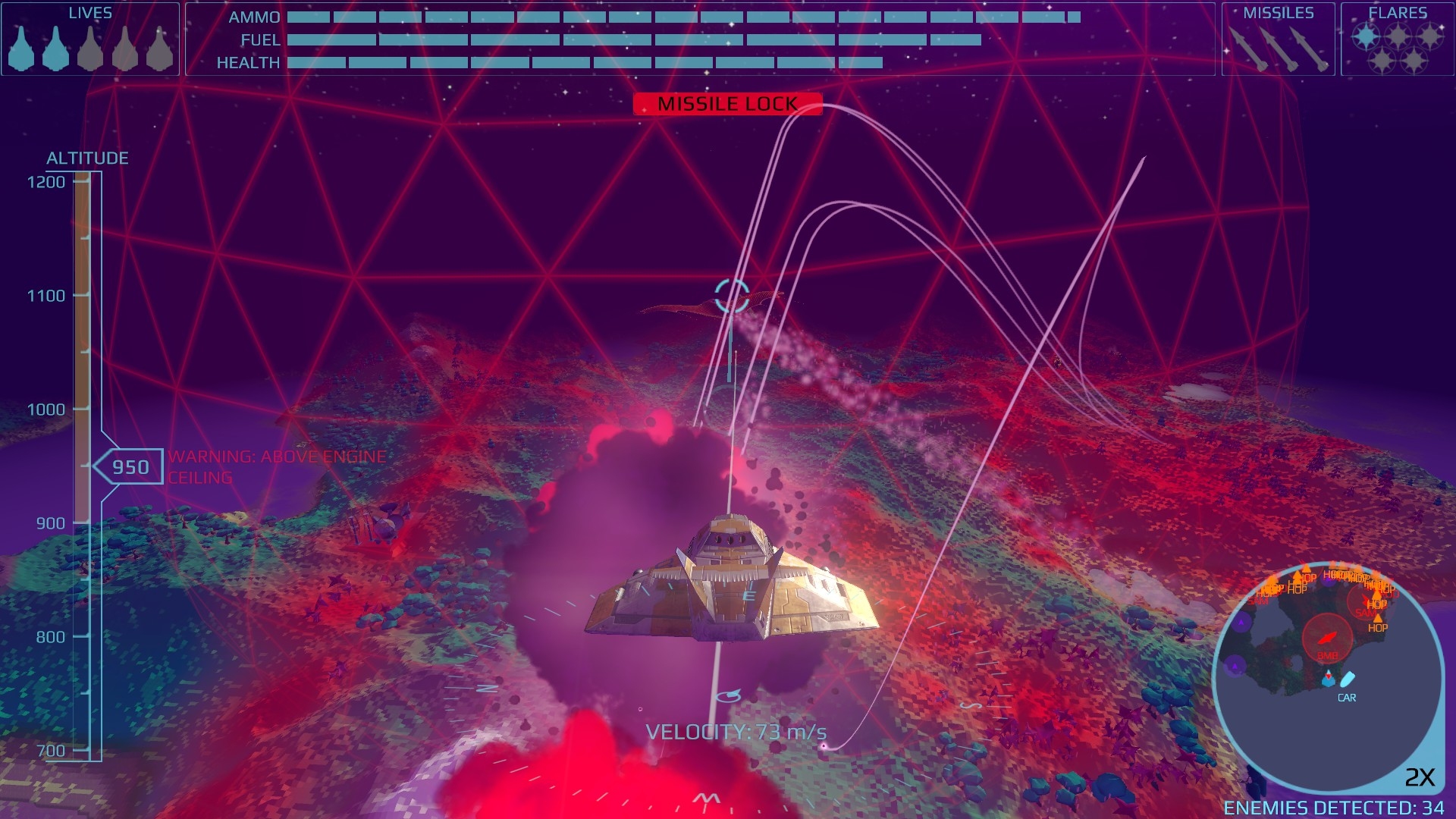
It’s a foolish flier who fails to consider geography while cleansing a Xenoform level of threats. Because the monetary bonus you get at the end of a successful sortie (cash can be spent on persistent ship upgrades), is dependent on the proportion of the map that remains uninfected, you find yourself prioritising foes on the fly. If that hopper leaps over that ridge, it will tumble into a ‘clean’ valley and cause mayhem – I better neutralise it ASAP. That one on the side of the mountain I can probably ignore for the moment as, chance are, it will end up drowning itself in the sea… If I take out that SAM beside the lightning tower, I can go to work on the pods on the peninsula before they’ve reddened too much real estate… Compared to the battlespaces in many lite flight sims, Xenoform’s are uncommonly dynamic and thought-provoking.
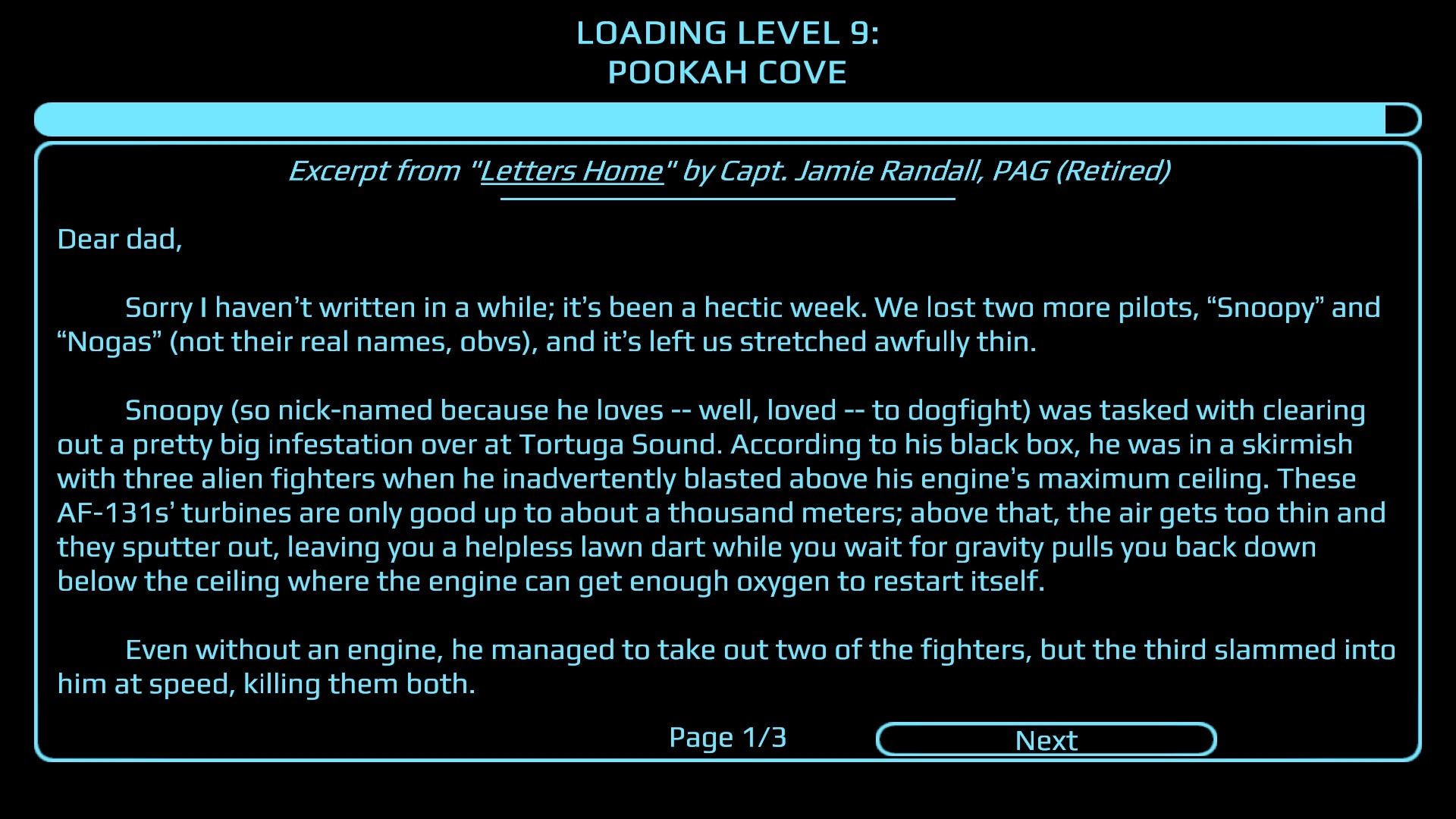
The fact that Scott’s design instinct and artistic ability is paired with a talent for talespinning and sound effect creation is an added bonus. The chunks of written narrative served up between sorties are top drawer, as are weapon reports, cockpit bleats, and the ethereal cries emitted by the ray-like bombers.
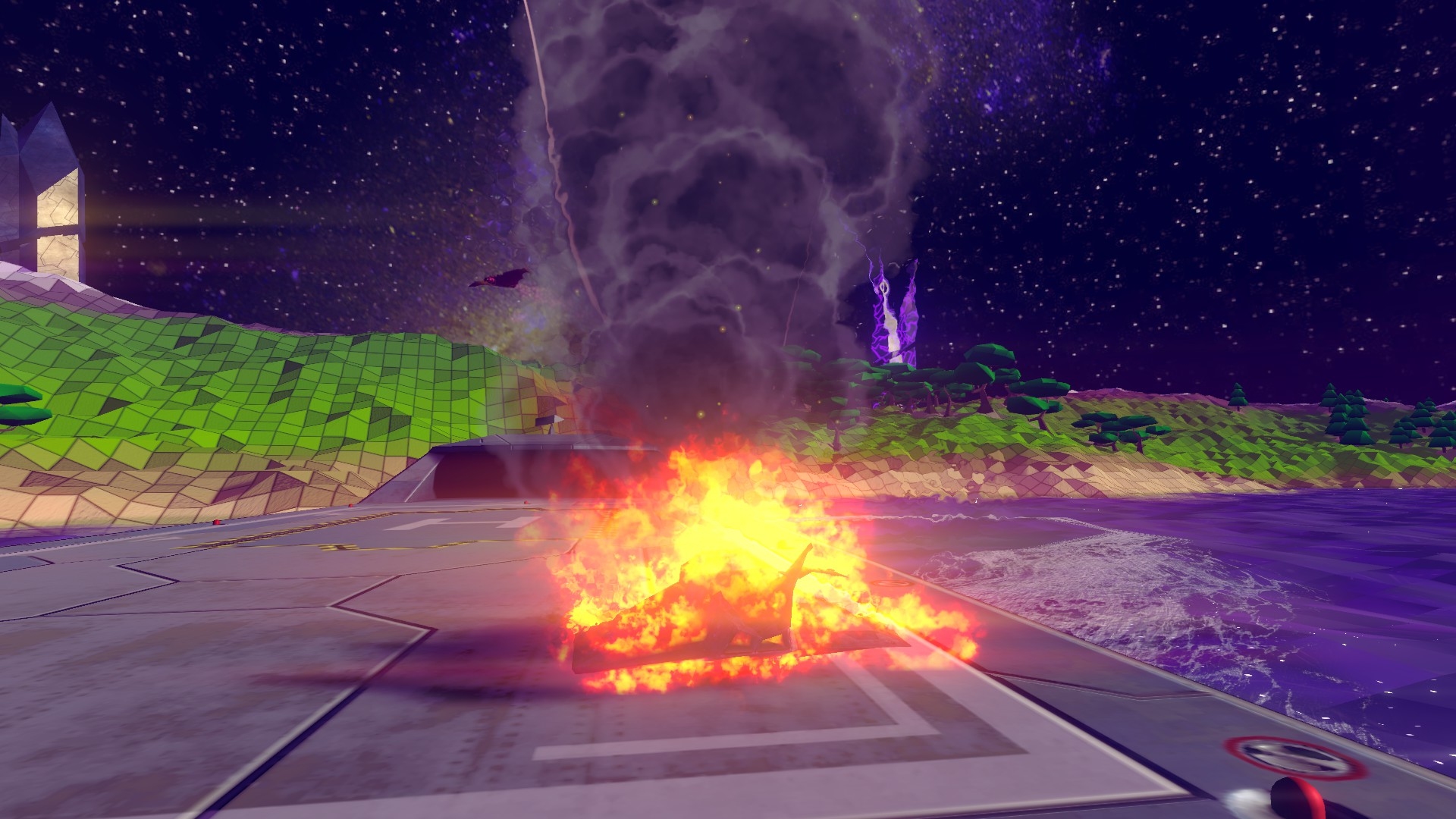
I can’t say for sure how many hours of entertainment the campaign offers, but the way resistance stiffens as the story progresses suggests its going to take me much longer to best the second half of the campaign than the first. I spent around forty minutes clearing Mission #11, and when I finally hosed the archipelago’s last hopper, my palms were moist and my stock of four spare ships exhausted.
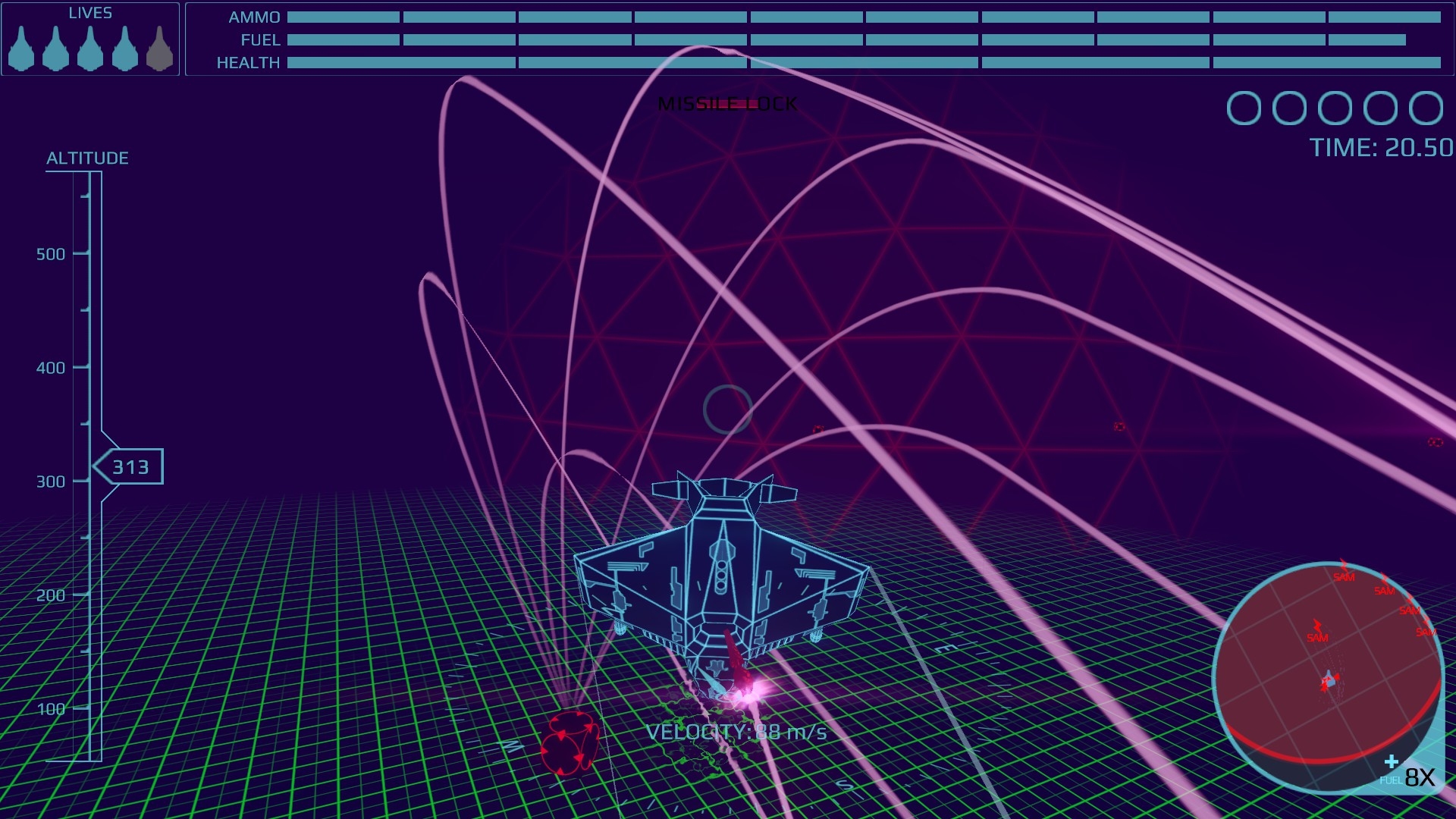
Ultimately, the thing that ProphetPX loathed about Xenoform is the thing I most enjoy. By the halfway point you’ll be throwing around your AF-131 like a pro. You’ll be viffing like it’s going out of fashion… strafing while strafing… using topography to lose pursuers… luring bandits towards crackling lightning towers. In other words, you’ll be having a blast and wondering why this £14 fun factory isn’t better known.


Xenoform sounds great, I lost many hours on virus back in the olden days. If you can’t fly with one thrust vector, are you really a pilot? Let’s find out, I’ve put it on my wishlist immediately.
Xenoform sounds like the bee’s knees, wish listed.
Even better that there is a demo to try, great stuff!
By Stealth and Sea. Midget subs fascinate me, especially those of the Japanese. They seem to have put a lot if effort in their program. Most have heard of the 5 J-midgets at Pearl. But midgets were active elsewhere too: Sidney Harbor, Madagascar, Guadalcanal and the Solomons, etc. They had generally limited success.